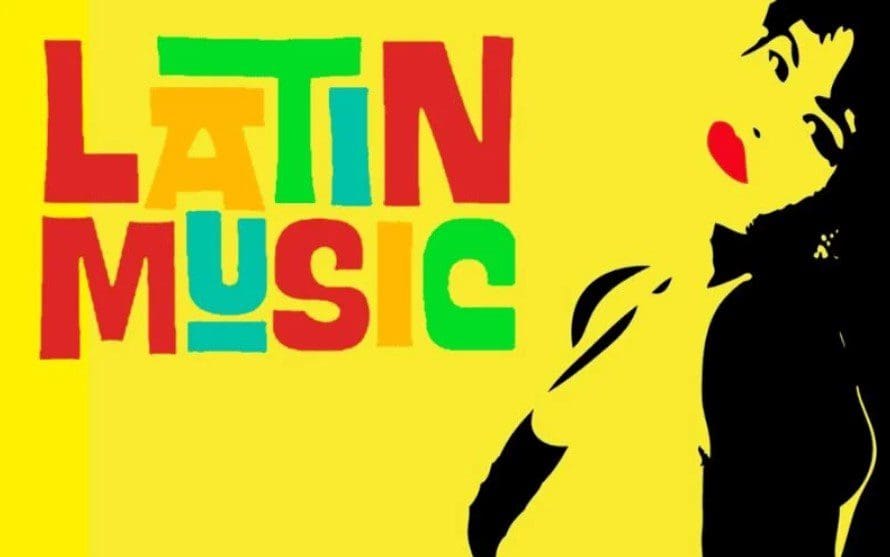Immerse yourself in the vibrant world of Latin music, where rhythmic beats and catchy tones create an infectious energy that is impossible to resist. This article presents a compilation of 20 of the best Latin dance songs, curated to ensure a non-stop experience of exhilarating music. From chart-topping hits like “Despacito” by Luis Fonsi feat. Daddy Yankee, to the addictive rhythms of “Loco Contigo” by DJ Snake, J Balvin, and Tyga, and the infectious melody of “Bailando” by Enrique Iglesias feat. Sean Paul, Descemer Bueno, and Gente De Zona, this list covers a diverse range of genres including reggaeton, salsa, and pop. Whether you’re hosting a party or simply in the mood for some celebration, these songs will make you want to dance and unleash your inner Latin spirit. Get ready to let loose and embrace the pulsating rhythms of Latin music!

Overview of Latin Music
Latin music is known for its rhythmic beats and catchy tones that have captivated listeners around the world. It encompasses a wide range of musical styles and genres, from salsa and reggaeton to Latin pop and fusion tracks. The popularity of Latin music continues to rise, with its infectious melodies and energetic rhythms creating a universal appeal that transcends language barriers. In this article, we will explore the different genres and dance styles within Latin music, as well as the impact it has had on global music culture.
Top Latin Dance Songs
When it comes to Latin music, the dance floor is where it truly shines. The list of the top 20 Latin dance songs features a combination of popular hits from various genres. Songs like “Despacito” by Luis Fonsi feat. Daddy Yankee, “Loco Contigo” by DJ Snake, J Balvin, Tyga, and “Bailando” by Enrique Iglesias feat. Sean Paul, Descemer Bueno, Gente De Zona have taken the world by storm with their infectious beats and catchy hooks. These songs not only showcase the diversity of Latin music but also have the power to make people move and groove to the rhythms.

Reggaeton: A Dominant Genre
Reggaeton is a dominant genre within Latin music that has gained massive popularity in recent years. Originating in Puerto Rico, reggaeton is characterized by its fusion of Latin American rhythms, rap, and electronic music. The beats are infectious and the lyrics often touch upon themes of love, partying, and urban life. Famous reggaeton artists like Daddy Yankee, J Balvin, and Bad Bunny have played a pivotal role in shaping the genre and bringing it into the mainstream. Songs like “Gasolina” by Daddy Yankee, “Mi Gente” by J Balvin, and “Callaita” by Bad Bunny have become reggaeton anthems that have transcended cultural boundaries.
Salsa: A Dance Music Tradition
Salsa, often referred to as the heartbeat of Latin music, is a lively and energetic dance music tradition that originated in the Caribbean. It has its roots in African and Caribbean rhythms, blending elements of Cuban son, Puerto Rican bomba, and Dominican merengue. Salsa music is characterized by its syncopated beats, vibrant brass sections, and intricate percussion patterns. Notable salsa artists like Celia Cruz, Marc Anthony, and Hector Lavoe have brought this genre to the forefront of Latin music. Popular salsa songs such as “La Vida Es Un Carnaval” by Celia Cruz, “Vivir Mi Vida” by Marc Anthony, and “El Cantante” by Hector Lavoe continue to resonate with audiences and keep the salsa tradition alive.

The Pop Side of Latin Music
Latin pop music has experienced a significant rise in popularity over the years, blending Latin rhythms with mainstream pop elements to create catchy and infectious tunes. Artists like Shakira, Ricky Martin, and Jennifer Lopez have played key roles in introducing Latin pop to a global audience. Latin pop songs have topped the charts across different decades, from Shakira’s “Whenever, Wherever” in the early 2000s to Luis Fonsi and Daddy Yankee’s “Despacito” in recent years. These songs not only showcase the versatility of Latin music but also demonstrate its ability to transcend cultural and linguistic barriers.
Fusion and Crossover Tracks
Latin music has a rich history of fusing with other genres, creating unique and groundbreaking crossover tracks that appeal to a wide audience. Artists like Selena, Carlos Santana, and Enrique Iglesias have successfully blended Latin rhythms with pop, rock, and even hip-hop. Selena’s iconic crossover hit “Como La Flor,” Carlos Santana’s collaboration with Rob Thomas on “Smooth,” and Enrique Iglesias’ “Bailamos” are prime examples of the fusion between Latin music and other genres. These artists have paved the way for the exploration of new musical styles and have opened doors for future generations of Latin artists.

The Language Barrier in Latin Music
One of the remarkable aspects of Latin music is its ability to transcend linguistic barriers. Many Latin songs incorporate both English and Spanish lyrics, allowing listeners from various cultures to connect with the music. Whether it’s the catchy hooks of “Despacito” or the romantic verses of “Danza Kuduro,” these songs have demonstrated the appeal and universality of Latin music. By blending languages and cultures, Latin music has become a vehicle for global music culture, uniting people through its infectious rhythms and expressive melodies.
Latin Music’s Influence on Dance
Latin music and dance go hand in hand, with different dance styles intricately connected to the music. Salsa, merengue, and bachata are some of the most popular Latin dances that have been influenced by the rhythms and melodies of Latin music. Salsa, characterized by its intricate footwork and sensual partner work, has become a staple in Latin dance scenes worldwide. Merengue, with its fast-paced movements and infectious beats, is known for its high-energy and celebratory nature. Bachata, a genre originating from the Dominican Republic, is characterized by its smooth and sensual dance movements. Latin music has not only provided the soundtrack to these dances but has also shaped the way they are performed and enjoyed.

Latin Music for Parties and Celebrations
Latin music’s energetic and infectious nature makes it the perfect genre for parties, celebrations, and any occasion where people want to dance and have a good time. Whether it’s a salsa club, a wedding, or a neighborhood fiesta, Latin music sets the mood and gets people on their feet. The rhythmic beats and catchy tones of Latin music create an electric atmosphere, encouraging everyone to join in and let loose. From iconic songs like “Livin’ La Vida Loca” by Ricky Martin to current hits like “Loco Contigo” by DJ Snake and J Balvin, the playlist for any Latin-themed party is filled with songs that make people want to dance and have a memorable time.
The Future of Latin Music
Latin music continues to experience growth and evolution, constantly exploring new styles and embracing diverse influences. Emerging artists like Rosalía, Ozuna, and Karol G are redefining the boundaries of Latin music, infusing it with elements of trap, R&B, and electronic music. The future of Latin music looks bright, with artists pushing boundaries and creating music that resonates with a global audience. As Latin music continues to make its mark on the global music scene, new trends and styles are bound to emerge, solidifying its place as a powerhouse in the industry.
In conclusion, Latin music’s rhythmic beats, catchy tones, and infectious melodies have made it a beloved genre worldwide. From reggaeton to salsa, Latin pop to fusion tracks, its diverse range of styles and genres continues to captivate listeners and break down language barriers. Latin music has not only influenced dance styles but has also left an indelible mark on global music culture. As the future of Latin music unfolds, it promises to bring forth new styles, emerging artists, and innovative trends that will further solidify its place in the ever-evolving music landscape. So whether you’re at a party, in the car, or just looking to dance, Latin music is sure to keep your feet tapping and your spirits lifted.






